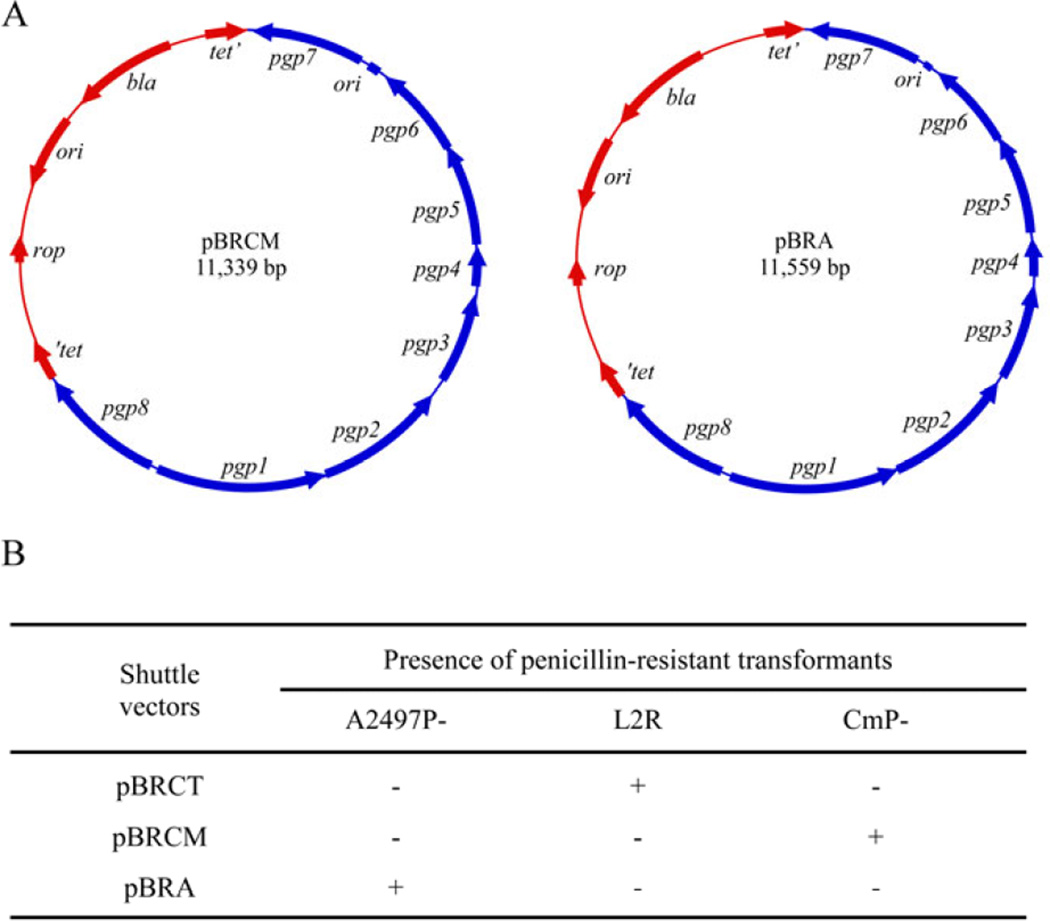Fig. 1.
Construction of chlamydial plasmid shuttle vectors and homotypic plasmid transformation tropism. (A) C. muridarum pBRCM and C. trachomatis A2497 pBRA. pBRCM was constructed using primers JHC626 (5’-GGCCGGCGGCCGCCCTCAAAAGCAACTGTAGATTATATTAGGGCCATC-3’) and JHC627 (5’-CCGGCCCGCCGGTGAACTAAATGGATATAATTTTAATTATATCACAATATAGT TGG-3’), introducing EagI and SgrAI sites respectively. pBRA was constructed using primers JHC740 (5’-GGCCGGCGGCCGTGTTGCCAGAAAAAACACCTTTAGGCTATATTAGAG-3’) and JHC741 (5’-GGCCGGGTCGACGAATATGAATATAATTTTAATTATATCACAATATTG-3’), introducing EagI and SalI sites respectively. Amplification using Phusion High-Fidelity DNA polymerase kit (New England Biolabs) and insertion into pBR322 was conducted as previously described (Song et al, 2013). (B) Transformation tropism of different chlamydial plasmid shuttle vectors. The results are representative of 3 independent experiments. Stable transformation is defined as a minimum of 3 successive passages of transformants grown in the presence of penicillin G. Transformation of CmP− was conducted as previously described (Song et al, 2013) while transformation of A2497P− followed the same protocol with minor modifications. The modifications include; (1) changing to media containing 10 U/ml PenG at 20 h post-infection and (2) selecting transformants in six well plates by using centrifugation-aided infection.

